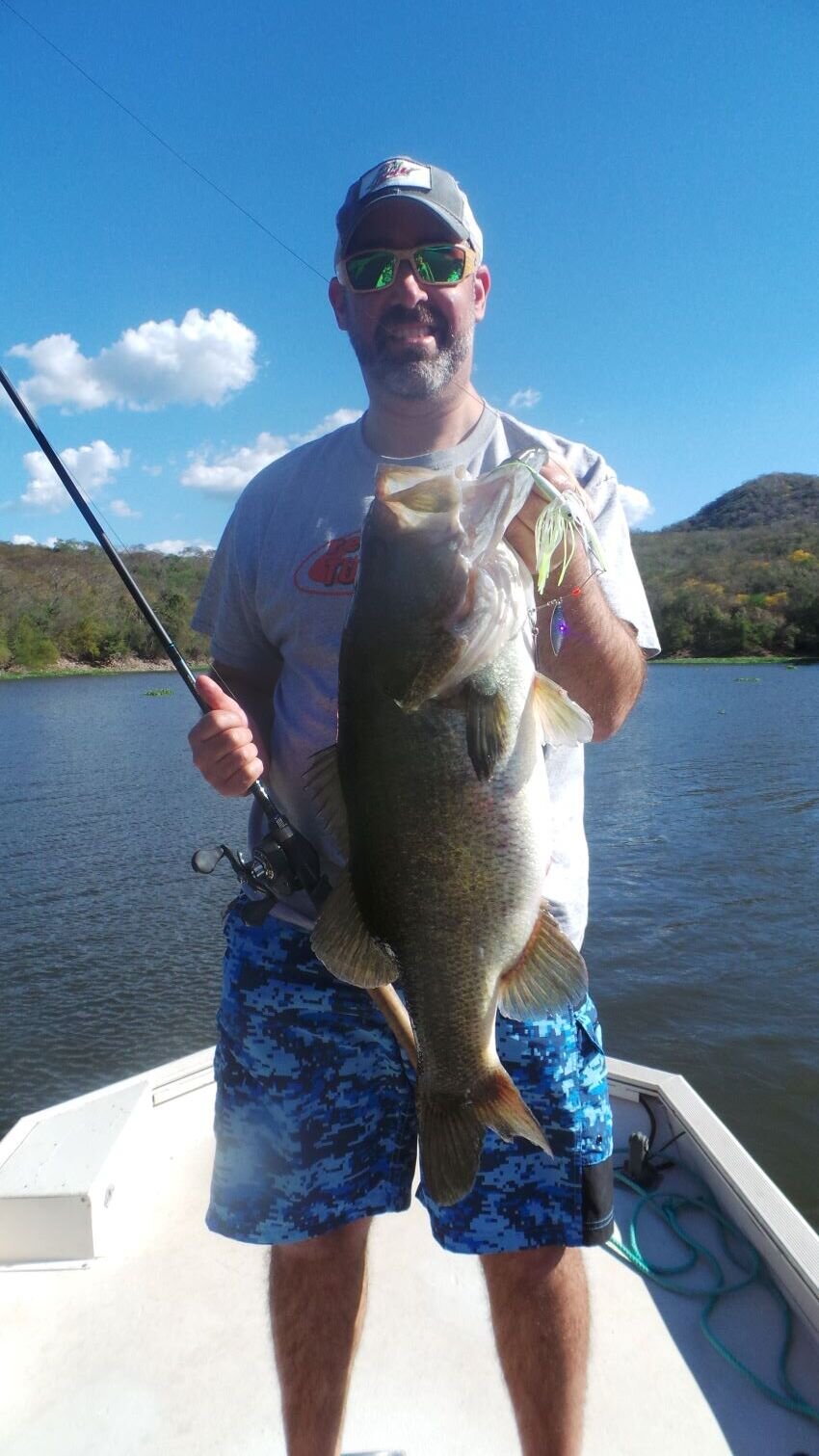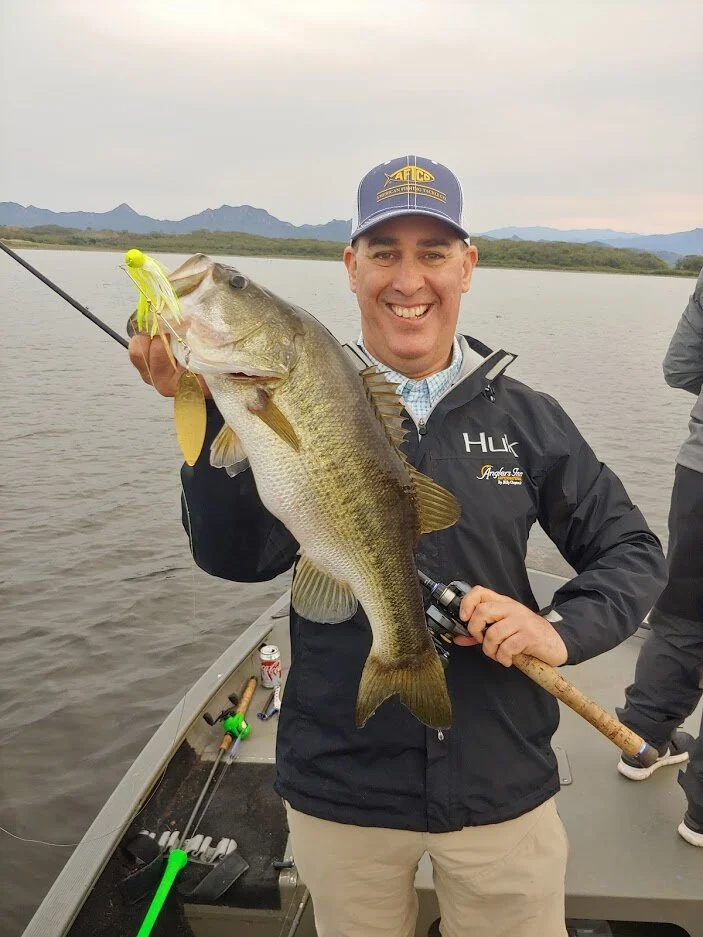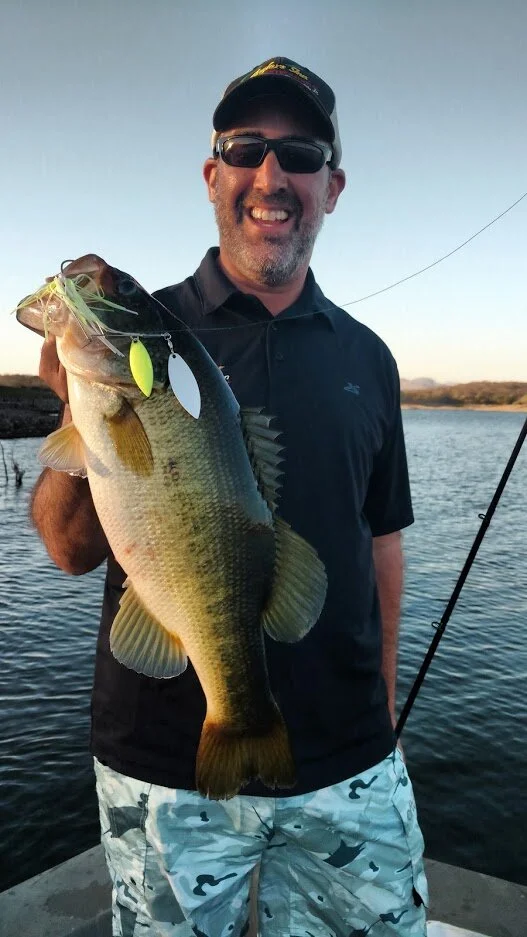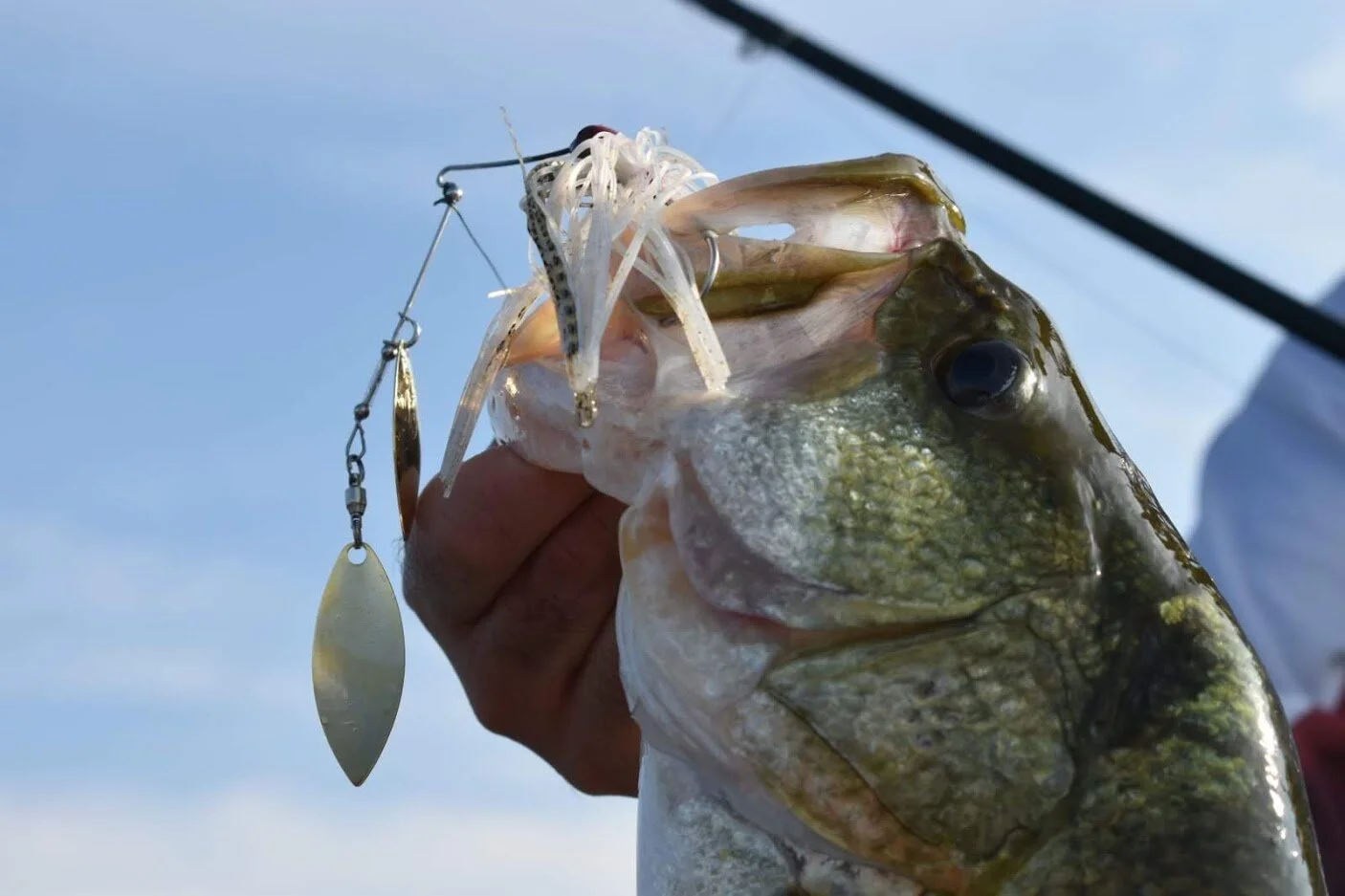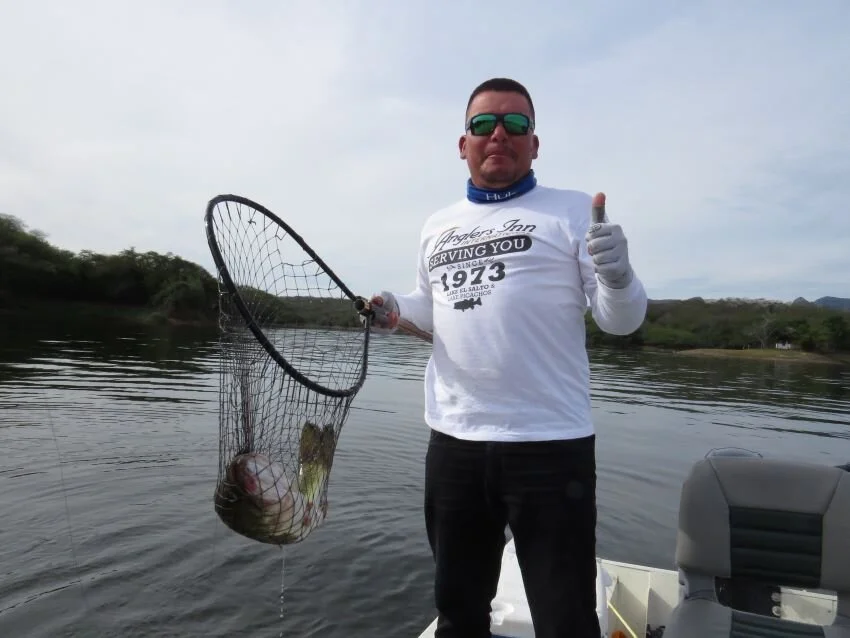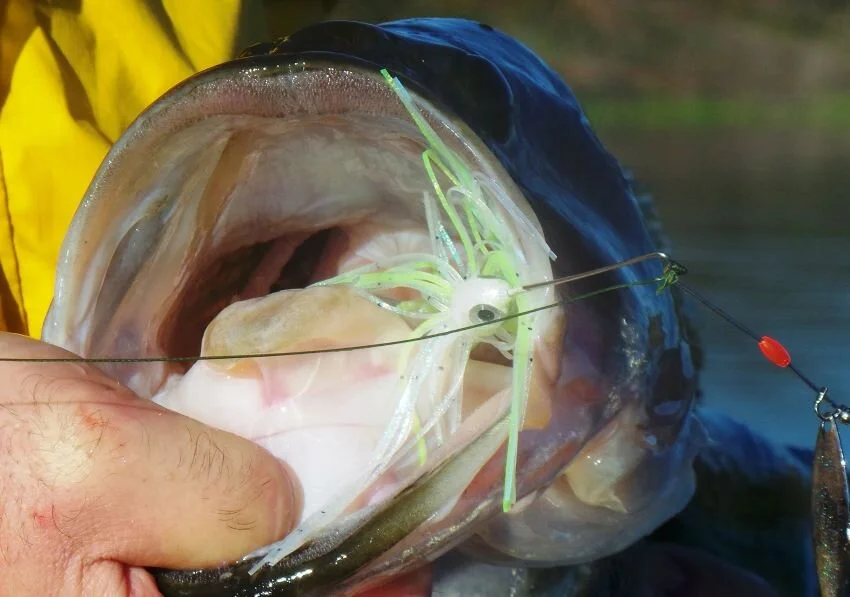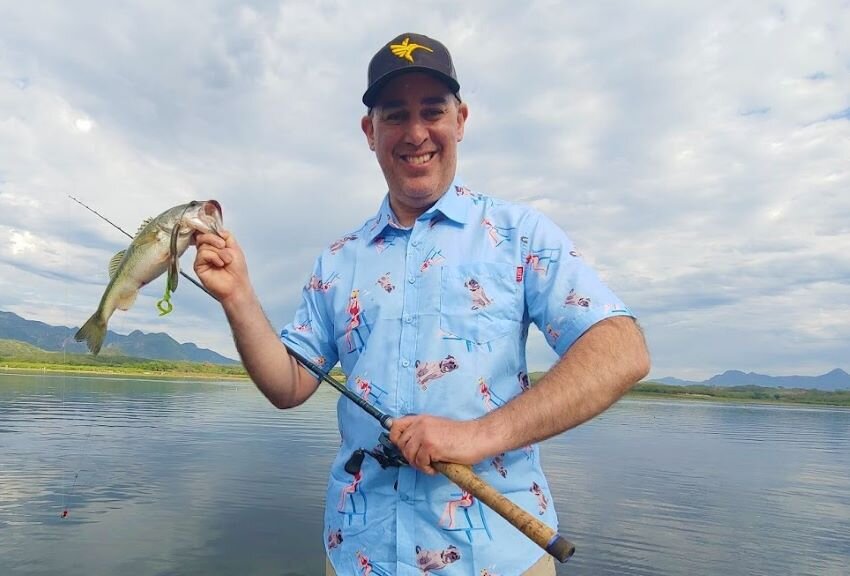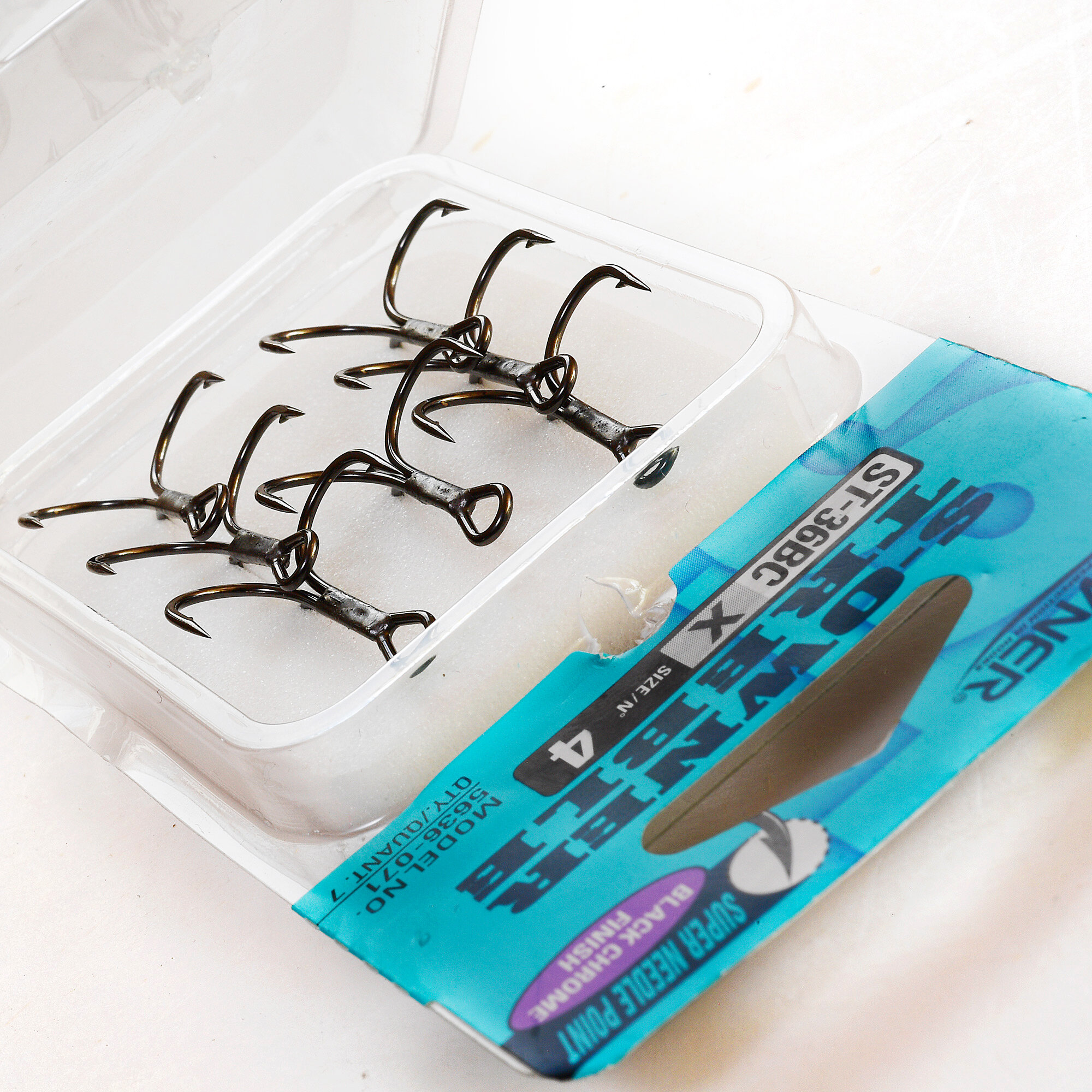Spinnerbaits for El Salto and Picachos
This nearly 9-pounder fell for a Spot Sticker Mini-Me
In the retelling of your Mexican bass fishing trip, topwaters may get the love, crankbaits may get the glory, and soft plastics may catch the numbers – but if you forget about spinnerbaits you’re ignoring a highly-productive tool.
Sure, spinnerbaits have lost some of their market share in recent years due to vibrating jigs, swim jigs and swimbaits, but they never stopped working. Be sure to have some in your El Salto or Picachos tackle selection. Packed flat in a Ziploc bags or a “worm binder” they don’t take up much space at all, and there are times when they are clearly the best choice for a big bite, particularly when there’s some wind. Here are my thoughts on how to choose, rig and fish them.
Depth
A spinnerbait is really several lures in one. I’ve caught fish on them in Mexico in ankle-deep water, where they’re effectively a substitute for a topwater, and I’ve had success in water over 25 feet deep. In the latter situation, it’s giving fish that have been shown dozens of crankbaits, soft plastics and swimbaits a different look. If you go through an area with a 10XD or a Carolina Rig and feel like you’re not maximizing the bite, try a 1 ounce spinnerbait in those same places.
Quality
These Mexican bass are mean and they are strong. Almost every first-time guest experiences some embarrassment when he or she calls for the net on that “10-pounder” that somehow turns out to weigh only 3. If there is any weakness in your lures, they will exploit it, so invest in high-quality spinnerbaits. I am a huge fan of War Eagle products. On my most recent trip to El Salto, my friend TJ Maglio introduced me to the ones made by Terry Oldham specifically for Mexican bass and I was very impressed. In super-deep water, I’ve had some success with the 1.5 ounce models from Blade Runner, and I’ve purchased some of their heavier versions, but have yet to try them.
Sizes and Colors
On the tidal waters near my Virginia home I fish a lot of ¼ and 3/8 ounce spinnerbaits, but in Mexico I rarely go below ½ ounce and while I’ve caught fish on spinnerbaits up to 1.5 ounces, my workhorses are ¾ ounce and 1 ounce. While I’ve repeatedly tried to find the “magic color” and have experimented with patterns including “tilapia” and black/blue, for the majority of my spinnerbait fishing in Mexico I keep it simple – first option is either chartreuse or white/chartreuse, and second option is some sort of “shad” color like War Eagle’s smoke/mouse.
Blade Variety
While I don’t vary much on color, I make sure that within those general color ranges I have a variety of blades – typically that means double willow or willow/Colorado, but I vary the size greatly. My inclination is to start with a big main blade, like a Number 6, but as I’ve noted before, sometimes they get keyed in on small bait. Then you want to downsize the larger of your two blades to something like a Number 4. Also, while most of the time my blades are silver, gold or a combo of the two, I have learned that the Mexican bass sometimes really like painted blades. On our May 2013 trip to El Salto, my friend Terry Conroy of Massachusetts had one of the best days of his life fishing a 1 ounce Yamamoto spinnerbait with one white blade and one chartreuse blade. That’s something I typically don’t use much for largemouths in lightly-stained water north of the border, but I always have a few ready to go in Mexico.
Retire Them
Between the mean fish and the heavy cover, you can expect your spinnerbaits to take a beating in Mexico. Don’t be pennywise and pound foolish. When one has been bent back into shape over and over again, seriously consider putting it away. My beloved War Eagles are known for eventually coming apart – and if it happens on that fish-of-a-lifetime you’re going to be upset. If you think your bait is compromised, remove the skirt and/or blades for future lure-building and throw the rest away.
R-Bend vs. Twisted Eye
In order to find spinnerbaits that wouldn’t bend out, I’ve experimented with “twisted-eye” line ties vs. “R-Bends.” In fact, I had a friend who works for one of the spinnerbait companies build me some of my favorites that typically come with an R-Bend with a twisted eye instead. While there are a few spinnerbaits I like that have the twisted eye (notably the deep-running Blade Runners), I remain convinced that for the most part you want the heavy thump of the R-Bend. Yes, they’re less durable, but I think the difference is worth it.
Cool Landings
The guides at Anglers Inn are only too happy to land ALL of your fish for you. With small fish that they want to unhook quickly, often they’ll grab the line and pull the fish into the boat. This is a quick path to death for your favorite spinnerbait as the wire will get straightened out. On small fish, encourage them to lip-land them or do so yourself. On larger fish, ask for the net. It’s a simple change that can pay big dividends.
Braid
At home I rarely fish spinnerbaits on braid, but at El Salto I do so the majority of the time. The cover is so thick in places (even where you can’t see it) that you’ll want to manhandle them away as quickly as possible. Granted, much of the cover is wood, and braid tends to dig into it, but I think the advantages outweigh the disadvantages. I compensate for the lack of stretch by fishing the lures on a moderate action rod. Some of my favorites are the St. Croix Legend Glass LGC72HM “chatterbait rod” (also available in a Mojo version) and the Dobyns 765CB crankbait stick. I typically use braid when fishing the big spinnerbaits deep, but one downfall of this combination is that sometimes as the lure is helicoptering to the bottom the line will get stuck in the blade/swivel and ruin the cast. That’s a price I’m willing to pay for more feel and better hooksets.
Trailer Hooks
At home, I probably use a trailer hook on my spinnerbaits 80 percent of the time and go without 20 percent of the time. In Mexico, those percentages are reversed. The cover is so thick that I find that except when I’m fishing relatively open water the trailer hook just takes away too much time from fishing – and the fish are aggressive enough that they get the main hook much more often than at home.

